What is moniliosis and how to deal with it?

Monilial burn is a dangerous disease that, under favorable conditions, actively develops in the garden and, as a result, can destroy most of the harvest of fruit trees. What kind of ailment it is, how to identify it, and how to deal with it, will be discussed in the article.
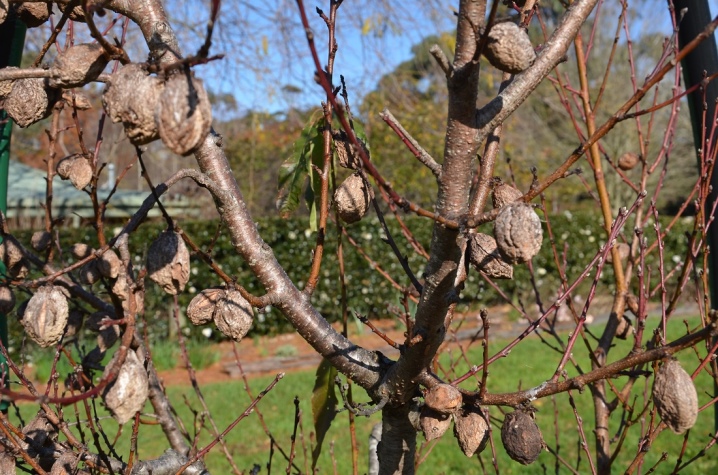
What it is?
Moniliosis is also known as monilial burn and fruit rot. This disease is most common in regions with temperate climates and damp springs with low temperatures. Usually the disease occurs in fruit and pome trees. However, it can also infect willow, hydrangea, pepper, tomato, lilac, peach and almond.
The disease occurs mainly during the flowering period of the plant. Penetrates through tree bark, the incubation period of the disease lasts about 14 days. Further, you can notice the drilling of foliage and flowers, they begin to fade and die - this is how the main symptoms look. Brown spots increase in size over time and subsequently cover the entire surface of the leaf plate. The foliage of the plant dries out, but not in the same way as in the autumn. It loses all its vegetable juices, its fragility and fragility increases sharply, and its green color changes to an unnatural brownish one.
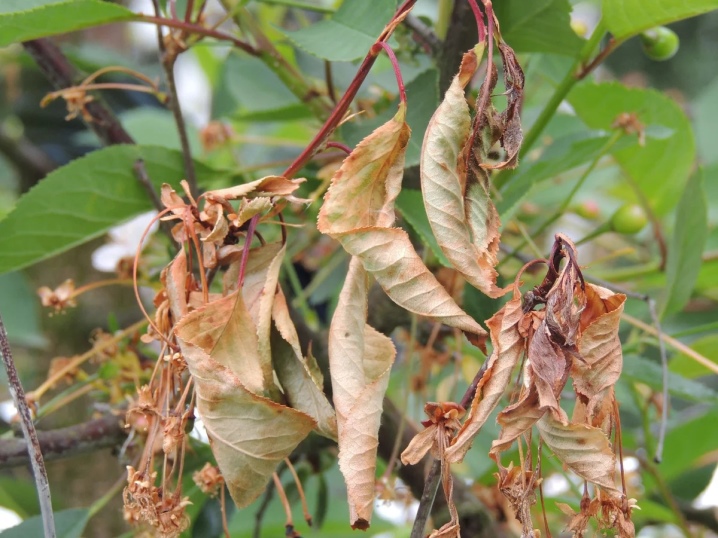
With the course of the disease, you can see how the fruit pulp begins to soften. It also begins to turn brown, and its taste changes abruptly, and the aftertaste of alcohol appears. A week after the disease has struck the fetus, sporodochias begin to appear on it. They look like small soft patches of a pinkish tint. Affected fruits that contain mycelium or sclerotia begin to mummify. Some of them fall off, while the rest remain on the branches and can hang like this until the end of winter.
Monilial burn actively develops under favorable conditions for it: at high humidity, the level of which is 95-100% and at average temperatures of + 15 ... 20 degrees.
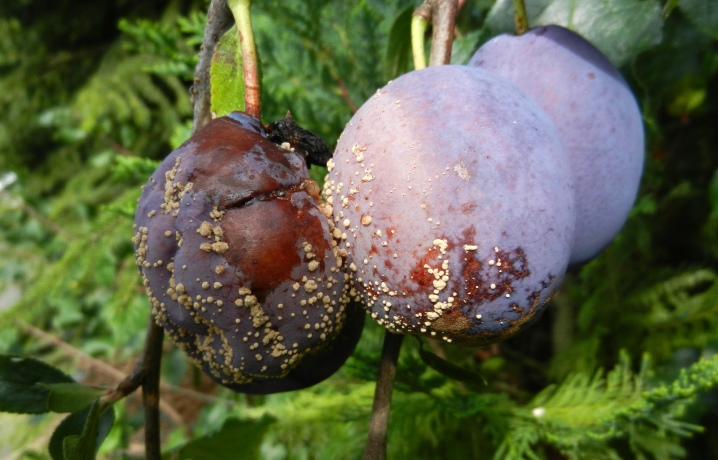
The cause of fruit rot is often the wind, as well as harmful insects. Sometimes it happens that the disease does not cover the entire fruit tree as a whole, but only a part of it, which is often located on the leeward side. From the outside, it looks as if a tree was walked with fire.
If this disease occurs on one of the trees in your garden, it must be treated as soon as possible. This is a dangerous infection that actively progresses in the presence of favorable conditions and spreads throughout the garden. If you ignore the disease, there is a risk of losing the entire crop.
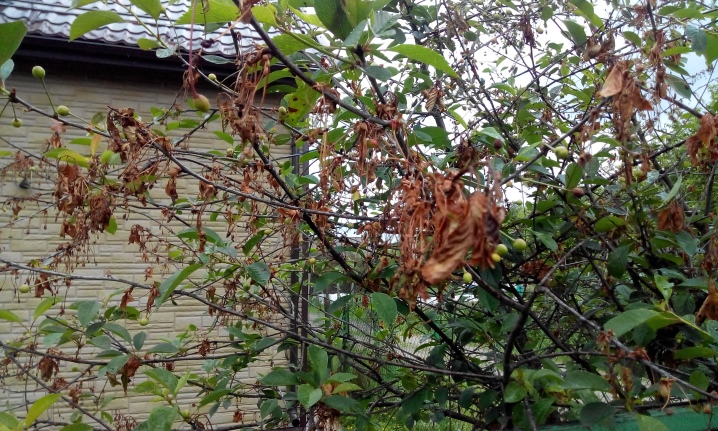
Overview of essential treatments
There are two ways to deal with monilial burn: these are fungicides and folk remedies.
It will be best to use fungicidal preparations. They are the most effective in the fight against a dangerous disease and show high results in the shortest possible time. You can use such products as "Raek", "Fitolavin", "Horus", "Skor" and "Fundazol".
For prophylactic treatment, you can use iron and copper sulfate, as well as Bordeaux liquid and a suspension of colloidal sulfur. Processing with these agents must be carried out even before bud break and flowering. It is advisable to do this with a preparation that is characterized by a high copper content. It is advisable to process the plant again after the final harvest, closer to autumn.

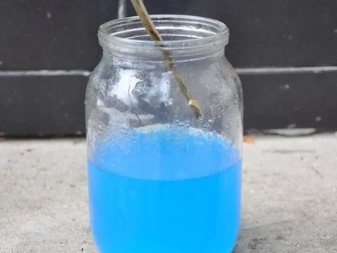
If you missed the treatment before the start of the growing season of the plant, it does not matter. You can spray a little later, when the fruits have already set. However, keep in mind that if before the growing season the plant is treated with a product with a concentration of 3%, then after that, treatment with a less concentrated product is required. A solution of 1% is suitable for this. Otherwise, the fruit tree can be harmed, it will get burned, which in the future will negatively affect its condition.
Note that it is necessary to stop processing a fruit tree a month before harvesting - this applies to both chemical and biological agents. In this case, the treatment is usually carried out in the evening so that the plant does not get burned. And if it started raining after processing, then the procedure will have to be repeated.
Please note that the processing procedure must be carried out carefully, otherwise there is a risk of harm both to the tree and to your own health.
In order for everything to go well, it is strongly recommended to follow the instructions and not neglect dosages, as well as follow safety rules, use personal protective equipment.
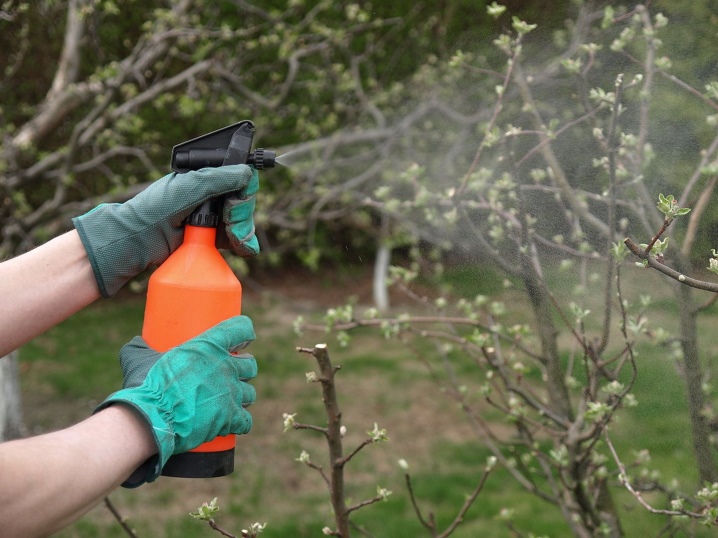
As for folk remedies, they are less effective when it comes to neglected cases. However, it is still possible and even necessary to use them in the early stages of the onset of the disease and for preventive purposes. The main advantage of such funds is their efficiency, ease of use, as well as absolute harmlessness. You can prepare a solution according to folk recipes in order to fight fruit rot with your own hands at home.
So, The most effective is a product made from 1 kilogram of urea, 10 liters of water and grated soap, which is necessary for better adhesion of the mixture to the foliage of trees. All components are mixed well, after which the solution is used to process the planting. So, half a bucket of such a mixture is enough for one fruit tree. If the plant is already adult and has a spreading crown, then the amount of the drug is recommended to be increased depending on the size of the tree.


It is necessary to process the plant with such a tool 2 times a year. The first such treatment is carried out in the autumn, until all the leaves fly around. The second treatment takes place in early spring, before the tree begins to awaken.
Another effective remedy for combating fruit rot is iodine. The solution from it is quite simple to prepare. All you need is 20 drops of the pharmacy product and 5 liters of water. It is necessary to process the tree with such a mixture 10-15 days after the end of flowering. By this time, the fruits should already be tied and be the size of beads.
Mustard is another effective ingredient in medicinal solutions. You will need 80 grams of dry mustard powder and 10 liters of water. All this is thoroughly mixed, after which the plant is sprayed with the resulting solution. This is done during the flowering phase of the tree. The repeated procedure is carried out subsequently 2 more times: after the fruits begin to form, and during their pouring.
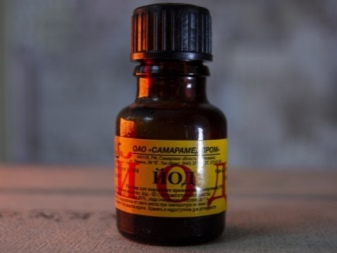

Do not ignore such components for solutions as salt and ash. To prepare a medicinal mixture, you will need 0.5 kilograms of each component, 100 grams of grated laundry soap and a bucket of heated water. All this is thoroughly mixed, after which it is boiled and filtered. Spraying of trees is carried out during their flowering period, as well as during the formation of their fruits.
A solution made from 4 tablespoons of baking soda, 15-20 drops of manganese, 10-20 drops of iodine and 10 liters of heated water will be very effective. In order for the mixture to better adhere to the foliage of the fruit tree, it is necessary to add a couple of tablespoons of liquid or grated laundry soap to it.Next, you need to process the plant with the resulting product.
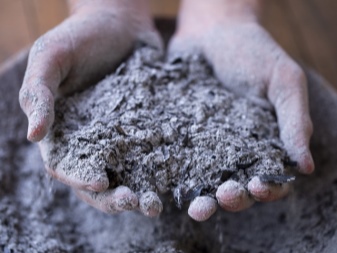
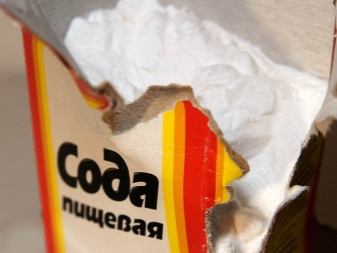
How and how to treat different cultures?
Apple trees
For apple, pear and other stone fruit, monilial burn is the most dangerous disease. The development of the disease occurs in stages. At the beginning, brown specks of a round shape appear on the fruits, which subsequently grow throughout the entire fruit. Its color changes to brown, and the pulp completely loses its taste.
Often this disease occurs during prolonged cold weather and high humidity in the spring.
To reduce the risk of fruit rot, it is recommended to collect and remove dried and fallen fruits, remove and burn affected branches and shoots. In addition, it is recommended to carry out preventive treatments not only to combat the disease, but also with harmful insects, which are often carriers of the disease. Trees are treated with fungicides, often summer residents use drugs such as Horus, Gamair, Abiga-Peak, Planriz and others. In addition, it is required to pay attention to compliance with agrotechnical rules.
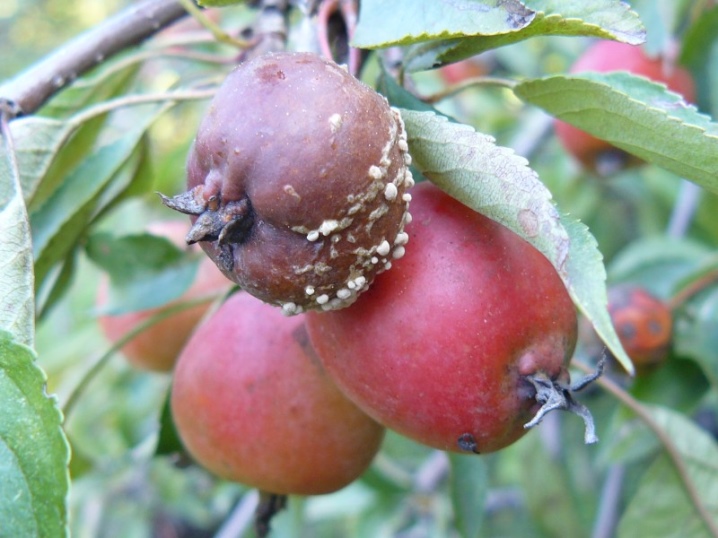
Cherries
Cherries and cherries are also susceptible to diseases such as moniliosis. It is expressed in wilting and drying of flowers, foliage, fruit branches. At the same time, you can see that very young shoots, which have not yet had time to woody, look as if they were walked over with fire.
After the foliage and other parts of the fruit tree, the fruit becomes infected. First of all, those berries that have mechanical damage are exposed to the disease. Dark spots actively appear and spread on them, and subsequently soft pads with fungal spores appear. Further, diseased fruits begin to wrinkle and dry.
To prevent the spread of the disease, it is necessary to collect diseased fruits and prune the affected branches, while capturing about 10 centimeters of a healthy part of the plant. All of these parts are usually burned so that the fungus does not accidentally transfer to healthy plantings. Further, the trees that were affected, and those that grow nearby, are treated with a Bordeaux mixture or special preparations: "Cuproxat", "Horus", "Abiga-Peak" and others. It is recommended to choose a dry and calm day for the procedure.
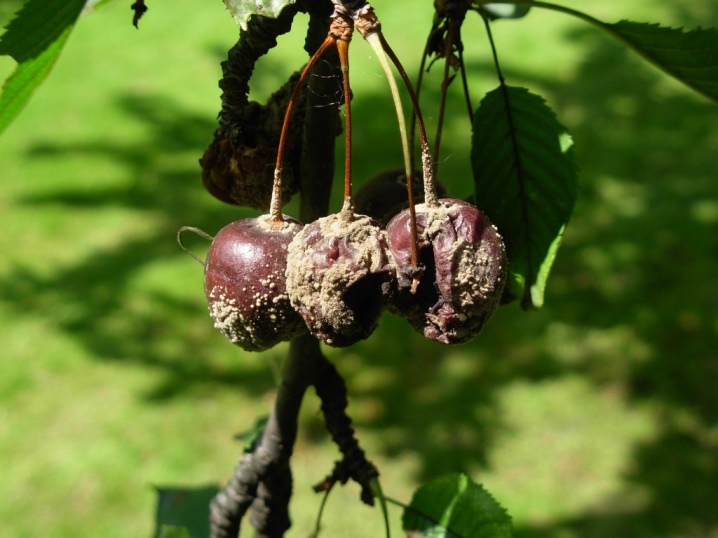
To avoid the occurrence of the disease, you can choose for planting varieties resistant to it - these are, for example, "Tamaris", "Turgenevskaya", "Octava", "Nochka", "Shokoladnitsa" and "Shpanka Krasnokutskaya".
Plums
In general, the symptoms of plum moniliosis are in many ways similar to the symptoms of this disease on other fruit trees: the fruits turn brown, pads with spores appear on them, branches, foliage and flowers dry and look burnt outwardly. Already adult branches can begin to crack, after which gum and sagging forms on them.
Treatment of the disease in plums is the same as in the case of apples, pears and cherries. It is recommended to pay special attention to the elimination of pests such as weevils, moths and more. At the same time, when processing plants, it is necessary to affect not only its crown and trunk, but also the soil under it. The processing is carried out using solutions of "Nitrofen" or copper sulfate, their concentration should be 1%.
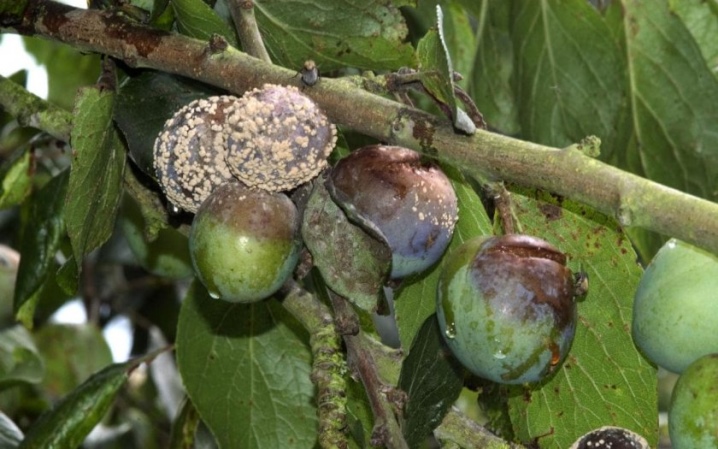
Apricots
Apricots and peaches can also be affected by this infection. This is evidenced by the fallen ovaries and flowers that occur in May. In June, the branches dry out, then the leaves darken and wither, and the fruits begin to turn brown, pads with spores form on them. In general, the symptoms are the same as in other trees.
As a result, the plant ceases to actively bear fruit, the fruits deteriorate, and those that remain, and there are few of them, simply burst in the future, never ripening.
To prevent the onset of the disease, it is recommended to strictly observe agrotechnical rules, provide the tree with high-quality care, prune it in a timely manner, and also spray it with fungicides 2 times a year. And it is necessary to remove the affected branches in time, burn diseased fruits, and in the fall, dig the soil in the tree trunk circle.
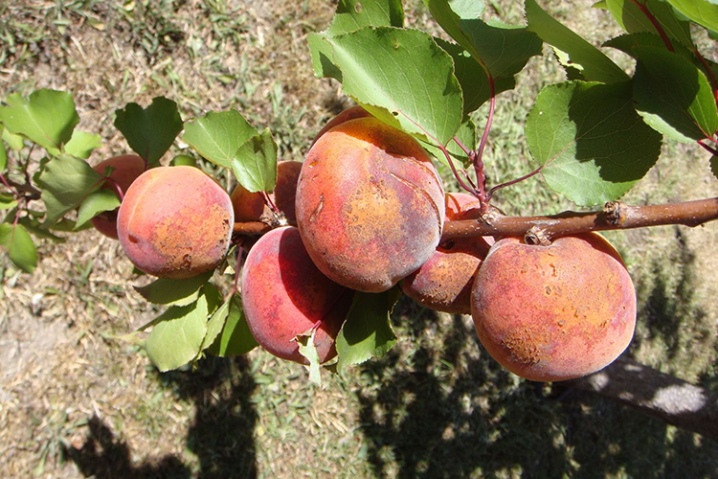
Currant
With moniliosis, currant berries look flabby and become covered with serous mold, and later the fruit is mummified. Some of them crumble, while the rest continue to hang on the branches.
To prevent the onset of the disease, it is recommended to treat the plant with copper sulfate in early spring., and before flowering and picking berries, spray, but already with Bordeaux liquid with a concentration of 1%. In this case, it is also worth paying attention to harvesting the affected berries and parts of the plant, since they may contain fungal spores.
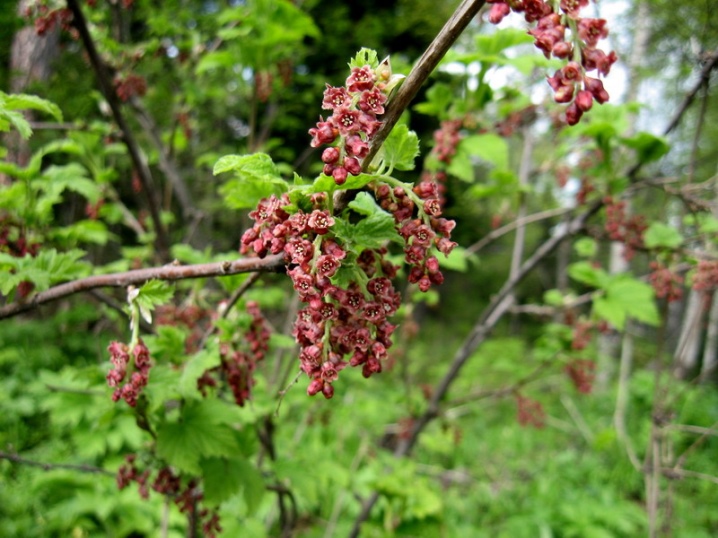
Cherry plum
In the case of cherry plum, the same thing happens as with cherries and cherries. The disease proceeds in the same way, it is treated with the same methods.

Honeysuckle
Fruit rot of honeysuckle manifests itself in the same way as on other stone fruit trees. For the treatment and prevention of the disease, it is recommended to use a solution of copper sulfate or Bordeaux liquid. Do not forget about the rules of agricultural technology.
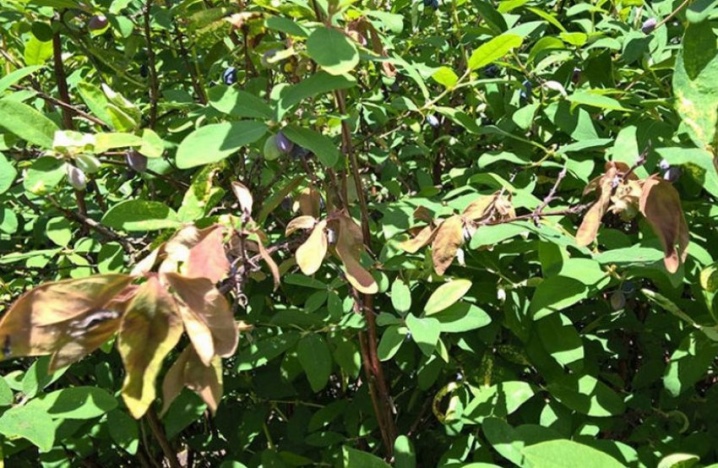
Other
Moniliosis can also be found on plants such as tomato, strawberry, raspberry, gooseberry and grape. The symptoms of the plant as a whole are the same as those of other plants: the fruits turn brown, the leaves dry, and so on.
Treatment of the disease is similar. Plants need to be treated with special fungicides. To prevent the onset of the disease, it is also necessary to follow the rules of agricultural technology and provide high-quality care for the plantings.
In addition, one should not neglect folk solutions that can be used to treat plants for preventive purposes.

Prevention measures
Compliance with preventive measures can save your plant from disease or help prevent the development of disease in its early stages.
So, when planting seedlings, a certain distance must be observed between them in order to prevent thickening: with a close arrangement of plants, the disease is quickly transferred from one planting to another. In addition, for planting, it is recommended to choose such plant varieties that have strong immunity and high resistance to diseases.
It is necessary to avoid mechanical damage to the plants, since due to such even small wounds, the infection can penetrate into the planting. If damage was nevertheless allowed, it must be immediately cured and closed.
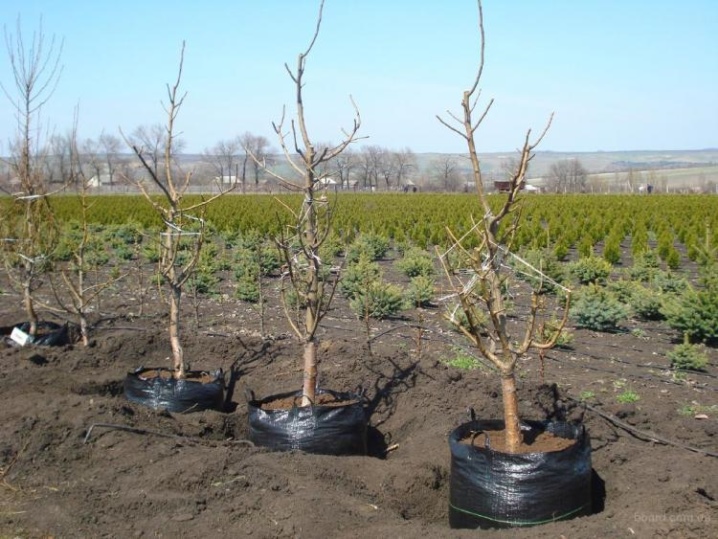
Plants must be regularly examined in order to notice the disease in time and prevent its further development. In addition, the plantings need to be provided with high-quality care: regularly prune fruit trees, remove plant debris and affected plant parts, eliminate harmful insects and weeds, apply the necessary fertilizers, prevent excess or deficiency of moisture, regularly disinfect garden tools, and carry out preventive fungicide treatments.
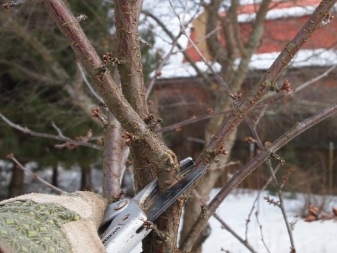

For information on how to get rid of moniliosis, see the next video.













The comment was sent successfully.